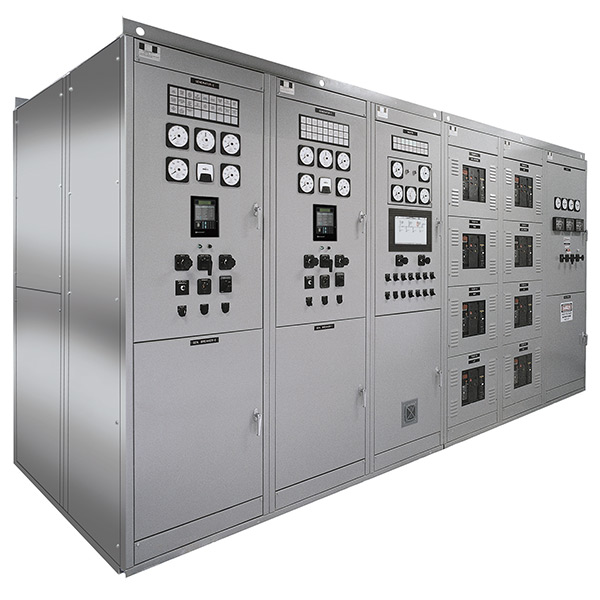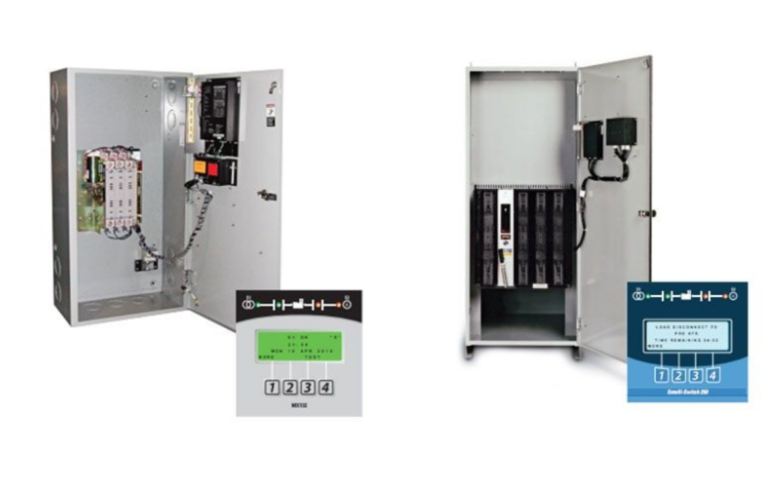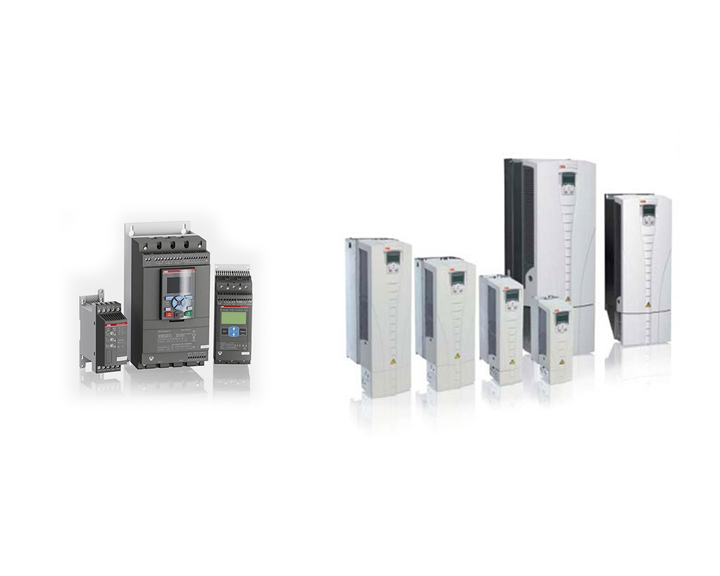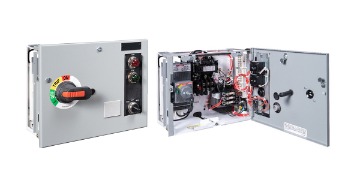How Does Paralleling Switchgear Work?
Paralleling switchgear (PSG) is a vital component for a paralleling generator and several other electrical systems. The benefits of paralleling power are extensive and can be instrumental in a variety of situations.
If you’re wondering how paralleling switchgear works, then read on to learn more. This article will explore the technicalities of paralleling switchgear: what it is, what it does, how it works, and the main components involved.
What Is Paralleling Switchgear (PSG)?
Paralleling switchgear can be complex and challenging to comprehend. To thoroughly understand what paralleling switchgear is, consider the technical definition of paralleling itself.
Paralleling is the combination or synchronization of two electrical inputs by matching one electrical system’s output voltage waveform with another system. Or, more simply put, it refers to connecting two generators to provide two times the wattage.
Building off that definition, paralleling switchgear (PSG) is a mixture of protection, control, metering, and switching elements that act as an integrated system to control power distribution for various systems.
PSG systems may be legally required for many different applications:
- Standby systems
- Emergency systems
- Critical operations power systems (COPS)
- Business-critical systems
What Does It Do?
Paralleling switchgear can serve numerous functions in a variety of situations. PSG is beneficial in many scenarios with advantages such as improved reliability and enhanced performance.
Here are their primary functions:
- Protection – ensures safety by supporting the need for backup power
- Metering – monitoring power through individual meters for precise load management
- Control – helps regulate the distribution of power for varying systems
- Acting as switching elements
How Does Paralleling Switchgear Work?
In paralleling electric systems, paralleling switchgear plays an essential role in completing several tasks. Each component works in tandem with the other for protection, metering, control, and acting as switching elements.
Different modes support different scenarios, including standard modes such as:
- Island, manual
- No-load testing
- On-load testing
- System testing
To understand how paralleling switchgear works, we need to examine each component and its function, which we review in the following section.
What Are The Components of a Paralleling Switchgear?
There are numerous components that make up paralleling switchgear. By examining each component, we can better understand how a PSG works. Several of these components include:
Paralleling System Breakers
You can break down paralleling systems further into subcategories based on where the breakers feed from:
- Utility main breakers are those that feed directly from the utility source.
- Generator main breakers are those that tie the generator bus to the load bus. They’re used for transfer between the sources.
- Generator breakers are directly fed from the generator source.
- Tiebreakers are those between similar source breakers, such as the load-bus tie or generator-bus tie breakers.
- Load feeders or distribution breakers are those that directly transfer switches or feed loads.
Protection
Protection requirements vary based on several factors, such as the size of the generator, the required level of system reliability, and system voltage.
For example, low-voltage circuit breakers with built-in trip units supply the necessary protection for low-voltage feeder circuits. Protections include:
- Generator protection
- Incoming utility protection
- Generator main and generator bus tie breaker protection
- Feeder and load bus tie breaker protection
- Failure to trip - backup protection
Control Compartments
PSGs include several control compartments, such as:
- The master system control compartment houses generator optimization, system status annunciation, load add/shed, user human-machine interface (HMI), and transfer control to manage the paralleling of generators.
- The utility control compartment is for loading control between the generator source and utility source and power management and providing transfer device status.
- The generator control compartment is for starting and stopping the generator, voltage control, and providing an annunciation of output, speed, engine and generator status, shutdowns, and alarms.
- The mimic panel is for displaying system one-line status while using the operator interface panel.
Engine Control
The PSG requires two primary engine/generator controls for proper function: an engine governor controller and a voltage regulator.
- The engine governor controller works to regulate the speed and output of the engine. For the most part, these are mounted near the engine in the control cabinet, as most major engine manufacturers have a matched engine governor controller.
- On the other hand, the voltage regulator controls the voltage and the reactive power of the generator itself. These are often located by the generator in the terminal box.
Master Control
Programmable logic controllers (PLCs) are a vital component of the PSG. A single controller per generator and a redundant backup PLC system for the master controller help ensure the reliability of the PSG.
Load Management
Load management, also known as add/shed, is regulated by the PSG’s master controller. It’s crucial for the engine generator’s efficient operation. Preassigned priorities, which is how loads are added, are based on the available online capacity, which maximizes the noncritical loads that the generator system supports.
The load/add can also perform functions to remove non-critical loads when power supply capacity is reduced or cannot support the total load.
Wrapping Up
Overall, paralleling switchgear is an integral part of paralleling generators and many other systems. The functions are abundant, including protection, metering, control, and action as switching elements. Each of the components must work together to create a fully functioning operation.





